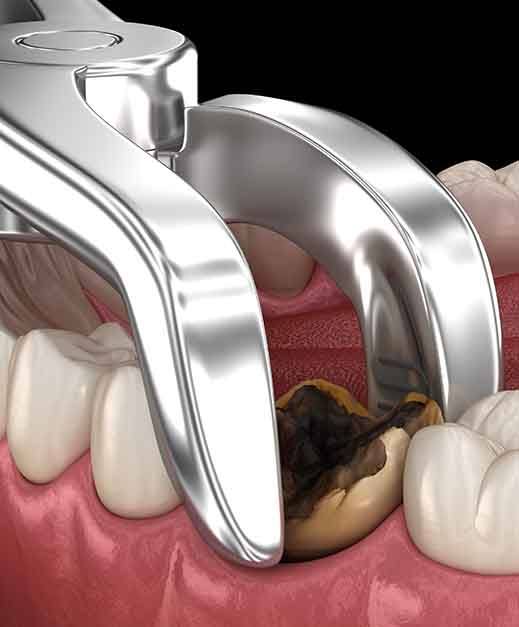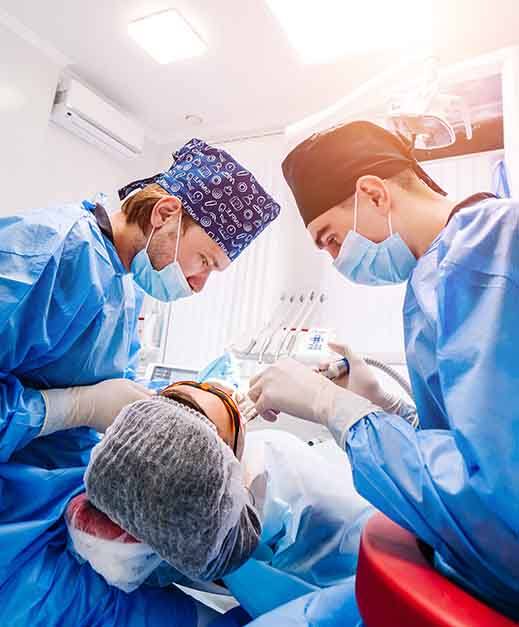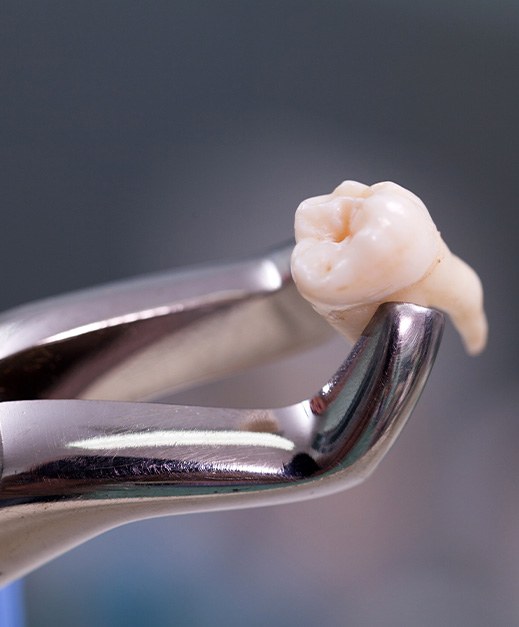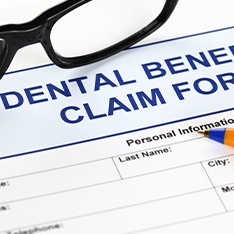Tooth Extractions – Columbus, NJ
Removing Damaged Teeth to Keep Smiles on Track
Do you have a tooth that is damaged as a result of a facial injury and cannot be saved? Are you suffering from an infection that is putting the rest of your smile at risk of further harm? Columbus Dental Arts has a solution that will remove damaged teeth and keep your smile on track – tooth extractions in Columbus. By removing the problem tooth or teeth, we can better safeguard your oral health and discuss effective ways to restore your smile. Call us today to schedule an appointment to find out if this service might be right for you.

Why Choose Columbus Dental Arts for Tooth Extractions?
- All Dentistry Performed Under One Roof
- We See Children and Adult Dental Patients
- Early Morning and Evening Dental Appointments Available
Reasons Why Tooth Extractions Are Necessary

When meeting with Dr. Fraser about your damaged or decayed tooth, she will likely only recommend tooth extraction if it’s absolutely necessary. Dentists tend to try and save the tooth with other solutions, like a dental crown or root canal treatment; however, when these do not provide the kind of repair and restoration needed, the only option is to remove the tooth.
This will happen if:
- Decay has spread and is causing extensive damage to the tooth, and it is putting abutment teeth at risk.
- Advanced gum disease is causing one or more teeth to become loose because of the spreading infection.
- The tooth is badly broken because of facial trauma, and it cannot be saved with a dental crown.
- A child has a baby tooth that needs to be removed to make room for the permanent tooth.
- Orthodontic treatment is required but one or more teeth must be removed to create ample space for movement.
The Process of Removing a Tooth

When removing the tooth, Dr. Fraser will first make sure you are comfortable by using local anesthesia. She will administer it at the start of the appointment so that your mouth is numb throughout the procedure. She will then use specialized dental instruments to remove the tooth.
Dr. Fraser will lift the tooth from its socket using a dental elevator. This makes it easier to remove. She’ll then trade the elevator for dental forceps, which will allow her to grab hold of the tooth. Using a gentle motion, she will move it back and forth so that it detaches from the connective tissues underneath.
Once the entire process is complete, the next phase will include time spent recovering at home. After your mouth is fully healed, our dentists will discuss ways to replace the extracted tooth. Unless it is a wisdom tooth, all other teeth need to be replaced to avoid bone resorption and further tooth loss.
At Columbus Dental Arts, we provide dental bridges, dental implants, and dentures as effective ways to restore and rebuild smiles.
Tooth Extraction Aftercare

During your recovery, it will be necessary for you to follow the guidelines that Dr. Fraser provides. These will ensure that you do not experience any problems while you heal. Make sure that you:
- Take any prescribed or over-the-counter pain medicine as instructed.
- Get plenty of rest after returning home from your procedure, as the anesthesia will need time to wear off.
- Leave the gauze you receive in place for a few hours (3-4), as this will help stop the bleeding and encourage a blood clot to form.
- Use a cold compress to minimize swelling and alleviate discomfort. You can apply it for 10 minutes at a time.
- Avoid using straws or spitting, as this can dislodge the blood clot and cause a dry socket.
- Rinse your mouth with warm salt water after 24 hours. This will help speed up the healing process, remove harmful bacteria, clean the surgical site, and ease discomfort.
- Prop your head while sleeping to keep additional swelling from occurring.
- Do not smoke.
- Keep up with your oral hygiene routine but be mindful of your extraction area.
Although it is never the desire of any dentist to remove a natural tooth, performing a necessary tooth extraction can protect your oral health and well-being by eliminating the potential spread of harmful decay to other areas of your smile.
Understanding the Cost of Tooth Extractions

If you have a broken, decayed, or aching tooth that needs to be removed, the cost of your treatment is the last thing you want to worry about. Our Columbus Dental Arts team will gladly provide a detailed estimate after your initial examination so that you know what to expect and will walk you through the information for your approval before proceeding.
Continue reading to learn more about how we determine the total amount due for your treatment, and feel free to contact us with additional questions.
Factors That Can Affect Tooth Extraction Cost

You might not pay the exact same rate as someone else to have a problematic tooth pulled because the pricing depends on your unique circumstances. Some factors that can impact your invoice include:
- The severity of your condition. If your tooth has become impacted or infected, there’s a chance a specialist may need to be brought in, increasing the cost.
- The number of extractions. Those having multiple teeth removed can expect to pay more than single extractions.
- The location of your tooth. Molars in the back of your mouth are more challenging to access and contain more roots than teeth in the front of your mouth, which typically requires more time, effort, and resources to remove.
- The type of replacement. There are several ways to replace missing teeth, each with its own pricing structure.
Does Dental Insurance Cover Tooth Extractions?

Many dental insurance policies cover about 50% of major procedures like tooth extractions, but certain restrictions often apply. For example, benefits typically only kick in once you’ve met your annual deductible or completed the required waiting period. However, every plan is different, so it’s important to check your details to have an accurate idea of what’s included.
Please let us know if you’re struggling to find the information or need help with paperwork! Our friendly office staff is familiar with many providers and can help you maximize your available benefits.
How to Make Tooth Extractions Affordable

Removing a troublesome tooth can protect your grin from worsening disease or decay, but you might hesitate to schedule your procedure if you’re concerned that you can’t afford it. We don’t want you to miss out on smile-saving care, so we offer flexible payment plans to qualifying patients. We can work with you to break up your total invoice into more manageable monthly payments that work for your budget.
Tooth Extractions FAQs
Does Getting a Tooth Extracted Hurt?
Many patients avoid getting tooth extractions because they are fearful that the procedure will hurt. The good news is that no matter if you’re having one tooth removed or multiple, your dentist’s first step will always be to numb your mouth.
After the procedure, you can expect some soreness and discomfort, but following the aftercare instructions provided by your dentist can help promote healing, prevent infection and reduce inflammation.
Should your pain worsen or if you begin exhibiting signs of infection such as a fever, contact Columbus Dental Arts right away.
Is There an Alternative to a Tooth Extraction?
Although tooth replacement options have become extremely lifelike and durable, at Columbus Dental Arts it is always our top priority to save you natural teeth. Whether there is an alternative to extracting your tooth depends mostly on the reason your dentist is recommending it. If it is due to extensive decay, root canal therapy may be an option. If you have periodontal disease, root scaling and planing could help. But if your dentist is recommending extraction, these may not be viable treatment options in your situation.
If you do need an extraction, you can rest assured that it is the best option for restoring your healthy, pain-free smile.
Can I Leave the Space Empty After a Tooth Extraction?
If the tooth in need of extraction is located towards the back of the mouth, many patients often believe that they don’t need to replace it. After all, if nobody knows it’s missing, why bother?
In reality, however, your teeth do so much more than create your beautiful smile. They are vital tools for chewing properly and enunciating clearly. Even just one missing tooth can make food harder to chew, causing a variety of problems like poor nutrition and indigestion. Furthermore, because your tongue needs to make specific motions against the backs of your teeth to form words, missing teeth towards the front of your mouth can often create a lisp.
Thus, even if nobody can tell, it is recommended that once you have finished healing you schedule an appointment with Columbus Dental Arts and select a tooth replacement option that works for you.
What Risks Are Involved with Tooth Extractions?
The great news is that tooth extractions are completely safe, but as with any dental procedure, there are always some risks. The primary risk with extractions is infection, which can spread throughout the body if not treated quickly.
Another risk is a condition called dry socket, which can be painful and delay your recovery process significantly. To prevent these complications, your dentist will provide you with an extensive list of aftercare instructions and explain some common symptoms of infection to look out for following your procedure.
